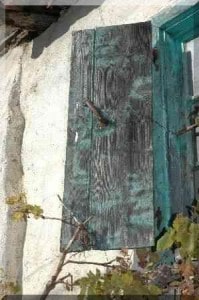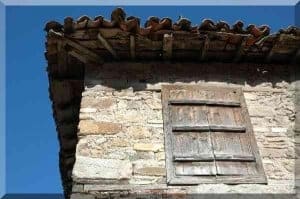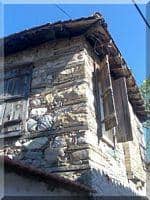I was born and brought up in Pembrokeshire, about as far west as Wales goes, and our houses are stone and strong and turn their pine ends to the gales sweeping in from the Irish Sea. The first house I ever owned was stone, with walls 80cm thick, packed with dirt and a roof that was lime washed to hold it together.
I love old houses. There is something so wonderfully permanent about them. Even tumbledown and overgrown with ivy and with sycamore seedlings sprouting in the cracks in the stone you know they were built to last. Someone planned for this building to be here a helluva long time. Someone optimistically put together a complex jigsaw of rocks to protect and shelter and to do so forever.
 And whilst we in Wales piled stone on stone and pointed with lime mortar our cousins in Turkey, 2000 miles away were doing the same. (They’d given up that flashy marble column stuff and gone back to basics)
And whilst we in Wales piled stone on stone and pointed with lime mortar our cousins in Turkey, 2000 miles away were doing the same. (They’d given up that flashy marble column stuff and gone back to basics)
Our stone house in Kirazli is constructed in a remarkably similar way to my first home in Wales – an outer skin of stonework, strong and stacked, taking the brunt of sun and storms; an inner skin of stonework and a piecemeal packing in the middle of rubble and dirt and minimum mortar. The middle layer of rubble stops the rain tracking through. In Turkey we also have wooden runners built into the walls and these flex and slide and allow the house to move in the event of an earthquake – we don’t have the need for them in Wales; we’re on pre-cambrian rock!
I look at the old houses in Kirazli and I want to fix them all. I want people to value them and make them whole and pass them on to a next generation. These are houses that are made to shelter generations. Compared to them the cement poured villas of the coast seem impermanent, they have a “maybe 20 years” quality about them, they don’t feel like they or the people that built them planned for them to be there in a century. But the houses of Kirazli do, and they have, they have weathered earthquakes and floods and even in poor repair they continue to stand and shoulder off the elements.
When renovated they are beautiful. They work with the landscape, reflect it and are part of it. The stones are amazing; the colours are so wonderful, sparkling with quartz that ranges in colour from smoky amber to raspberry ripples, sturdy sea green granites sit next to warm umber sandstones. The variety and quality of the stone is excellent.
 <center><img src=”/images/diary/oldhouse.jpg” width=”200″ height=”250″ alt=”Neighbours House, Kirazli” border=”0″></center>
<center><img src=”/images/diary/oldhouse.jpg” width=”200″ height=”250″ alt=”Neighbours House, Kirazli” border=”0″></center>
So okay, it’s tough to renovate them, to put in modern must haves like central heating and air conditioning and flushing toilets and make it seem part of the original building. But it’s a quietly satisfying way to spend our time and maybe time will thank us for trying to prolong the lives of buildings that were intended to be there a very long time and which are currently very under appreciated.
posted 02-12-2006
